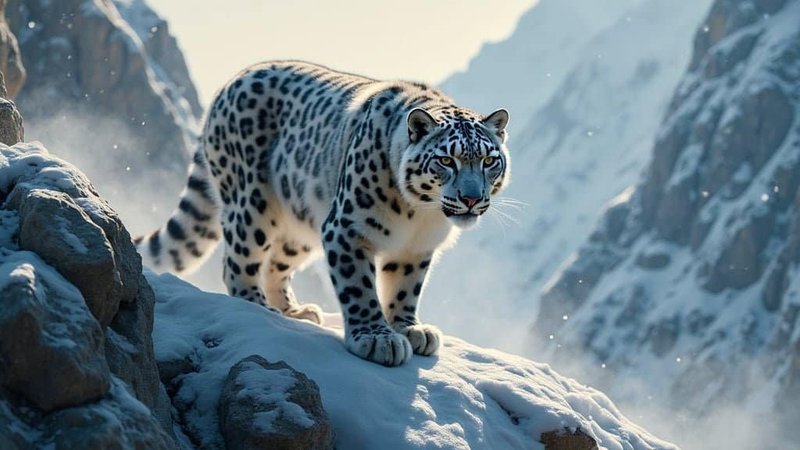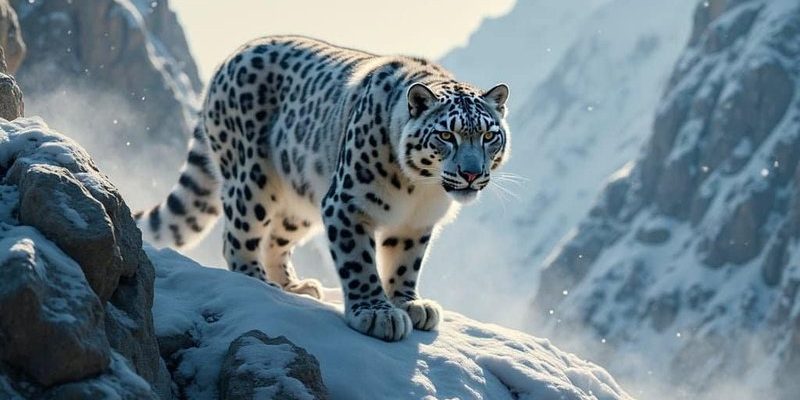
Imagine sipping a warm cup of tea while learning how the snow leopard became more than just a wild animal—it’s almost like a mythical being in some traditions. Just as the snow leopard adapts to harsh environments, the stories and beliefs surrounding it have adapted over time, embodying the values and struggles of the people who share its habitat. Let’s dive into how this extraordinary feline is represented in culture and folklore, from legends and symbolism to art and literature.
Historical Significance of the Snow Leopard
The snow leopard (Panthera uncia) has lived in the mountains of Central Asia for thousands of years, and its connection to the region’s cultures runs deep. Historically, these cats were revered by tribes like the Mongols and the Tibetan people. For them, the snow leopard represented strength and courage, traits they needed to survive in the harsh conditions of their environments.
Many ancient tribes believed that the snow leopard had a spiritual essence. Some even thought they were protectors of the mountains. In these cultures, seeing a snow leopard was considered a good omen, symbolizing not just good luck but also a connection to nature and the spirits residing within it. It’s fascinating how this animal became a symbol of not just survival, but of thriving in adversity.
Folklore and Legends Surrounding Snow Leopards
Folklore surrounding snow leopards is rich and varied. In several Tibetan legends, the snow leopard is seen as a guardian of the high mountains. One popular tale tells of a snow leopard that protects a sacred temple from intruders, showcasing its role as a fierce protector. This narrative highlights the cat’s strength, courage, and loyalty to its homeland.
Moreover, in Mongolian tales, the snow leopard sometimes transforms into a beautiful woman—an idea that signifies the blending of the natural and spiritual worlds. This motif can also be found in other cultures, symbolizing the snow leopard’s dual nature as both a fierce predator and a nurturing spirit. It’s intriguing how these stories not only entertain but also convey deeper truths about respect for nature and the balance of life.
The Snow Leopard in Art and Literature
The beauty and mystery of the snow leopard have inspired countless artists and writers. In Tibetan thangka paintings, the snow leopard is often depicted alongside other symbols of strength, like dragons or mythical creatures. These works capture the essence of the snow leopard, bringing its majestic presence to life on canvas.
In literature, snow leopards appear in poems and stories that reflect themes of solitude and grace. Writers often use the snow leopard as a metaphor for elusive dreams or aspirations, drawing a parallel between the cat’s stealthy movements in the snow and the pursuit of personal goals. This connection adds layers of meaning to the animal, allowing it to resonate with readers on multiple levels.
Symbolism of the Snow Leopard
The snow leopard carries various symbolic meanings that differ across cultures. In many areas, it represents protection, not just of physical spaces but also of spiritual realms. The animals are often seen as custodians, reminding people to respect and uphold the balance of nature.
In other cultures, the snow leopard symbolizes resilience and adaptability. Just as the snow leopard can thrive in harsh climates, people are reminded that they too can overcome obstacles in their lives. This duality of strength and gentleness serves as a powerful reminder of the importance of perseverance and adaptability in the face of challenges.
The Role of the Snow Leopard in Conservation Efforts
As the snow leopard faces threats from habitat loss and poaching, its representation in culture becomes even more significant. Many conservation groups use the snow leopard as a symbol to raise awareness about wildlife protection. By highlighting its beauty and cultural importance, these organizations aim to inspire action to protect not just the snow leopard, but the delicate ecosystems it represents.
Interestingly, educational programs often incorporate stories and legends about snow leopards to engage communities in conservation initiatives. By connecting the animal’s cultural significance to modern challenges, these efforts encourage people to take pride in their heritage while protecting their natural environment.
Understanding Modern Perspectives: Snow Leopards in Popular Culture
In today’s world, the snow leopard has secured a spot in popular culture, from documentaries showcasing its elusive nature to merchandise featuring its striking image. It’s not just an animal on a conservation poster anymore; it’s become a familiar figure in films and online spaces as well.
Social media has also played a role in building a community around snow leopard conservation. People share stories, images, and updates about these magnificent creatures, creating a global awareness that transcends borders. This modern portrayal connects younger generations to their heritage while igniting interest in wildlife preservation.
The snow leopard is more than just a stunning animal; it embodies a rich tapestry of cultural significance, folklore, and modern conservation efforts. From ancient legends to contemporary art, its representation touches on themes of strength, protection, and adaptability. As we continue to protect these magnificent creatures in the wild, we also keep alive the stories and values they represent in cultures around the world.
So, the next time you come across a snow leopard, whether in a documentary or a story, remember it’s not just an animal. It’s a symbol of resilience, a guardian of the mountains, and a reminder of the delicate balance we share with nature.

